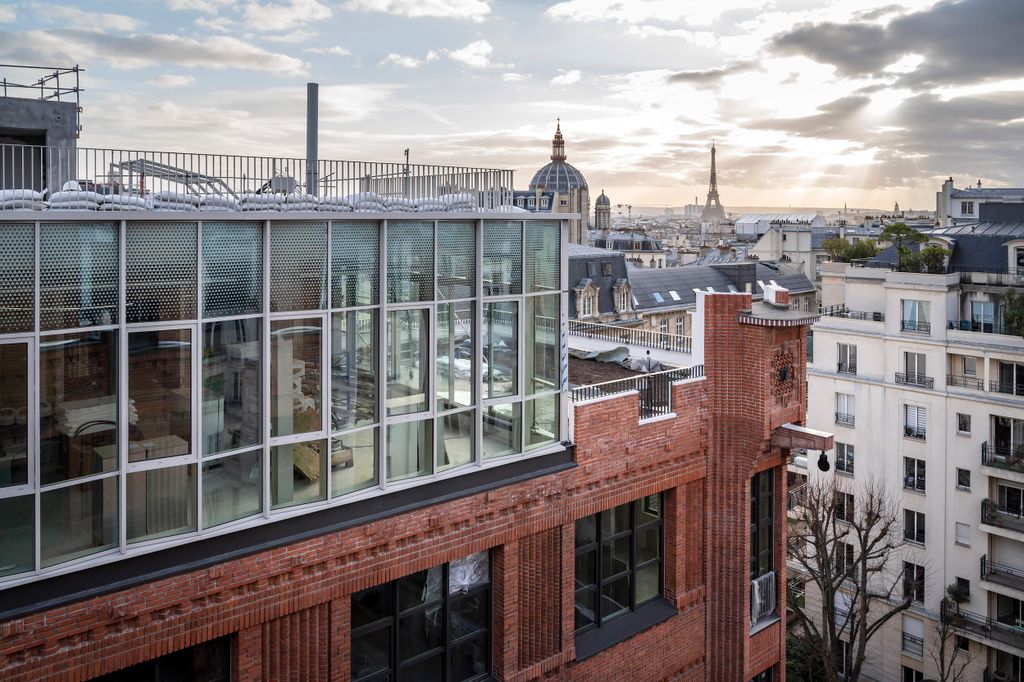Covivio Newsletter
Understanding tomorrow's city
- Find out all the Covivio news every month
- Discover our latest projects: offices, residential, hotels
- Decipher the city and its challenges with our Expert Views
A smart building is a construction in which advanced technologies and building management systems (BMS) improve occupant comfort while optimising energy consumption and reducing the environmental footprint.
These buildings aim to combine well-being, safety and energy performance through intelligent systems capable of learning and adapting to user habits.
Thanks to home automation and connected sensors, lighting, indoor temperature and air quality are adjusted in real time according to human presence and external conditions.
The data collected continuously enables more precise energy management, reducing costs and environmental impact. But green and sustainable buildings go beyond energy efficiency: they encompass water and waste management and integrate harmoniously into smart cities and commercial buildings.
Smart buildings play a key role in reducing carbon footprints. Their energy management systems optimise consumption, promote the use of renewable energies and integrate with smart grids.
Predictive maintenance keeps building equipment in optimal condition, extends its lifespan and limits costs, thereby supporting the sustainability of buildings.
Covivio has been developing its smart building expertise for several years and designs “smart ready” buildings that offer optimal comfort to occupants.
These buildings offer:
These approaches are part of a broader urban logic: the integration of buildings into smart cities. Connected to smart networks, buildings become producers, storers and redistributors of energy, actively participating in the energy balance of cities.
Smart buildings put technology at the service of people. By improving comfort and connectivity, they promote productivity and quality of life.
Covivio offers intuitive solutions that are accessible to all, based on the BYOD (Bring Your Own Device) principle. This allows every occupant to easily connect to the building’s infrastructure.
Smart building services are entirely designed, implemented and managed by Covivio in its multi-tenant buildings:
Example: L’Atelier, Covivio’s European headquarters (6,500 m²), illustrates this expertise. A true example of comprehensive smart building architecture, it also serves as a testing ground for refining the model and inventing the solutions of tomorrow.

Smart buildings are also redefining the workplace. Data enables spaces to be adapted in real time: flex-office, room management, optimisation of common areas. This intelligent management of working environments improves both productivity and daily well-being.
In the residential sector, Covivio also offers smart apartments with remote control of lighting, heating and security via smartphone.
BIM (Building Information Modelling) models a building in all its physical and functional dimensions. It facilitates coordination between stakeholders and reduces construction costs and lead times.
Once the building has been delivered, BIM optimises technical management and facility management throughout its life cycle. This approach maximises energy performance and ensures the sustainability of smart buildings.
The BOS (Building Operating System) acts as a true intelligent building management system. It centralises data from the digital model, BMS, home automation, CMMS, occupant applications and IoT sensors.
Its dashboards enable real-time monitoring of occupancy, comfort, energy consumption and maintenance. They facilitate the implementation of automated scenarios, improving the quality of life for occupants and reducing the carbon footprint.
For managers, BOS is a facility management asset. By consolidating all data into a single system, it simplifies maintenance, anticipates incidents and ensures optimised equipment management. This centralisation also helps companies achieve their ESG objectives.
Connectivity, the driving force behind smart buildings, also poses cybersecurity risks. Automated systems and connected objects require robust protection.
The safety of people and property is a major concern. To address this, the strategies put in place include:
Covivio, with the support of Mazars, conducted a comprehensive cybersecurity assessment of its offices in France. This process involved mapping the real estate portfolio to identify risks, evaluate existing measures and define action plans. It resulted in a Security Assurance Plan, consolidating best practices and ensuring enhanced protection.
International certifications (WiredScore, SmartScore)
These labels measure the connectivity, user experience and sustainability of technological infrastructures.
French R2S (Ready2Services) certification
The R2S label assesses connectivity, system interoperability, data security and network architecture. It also emphasises the well-being and performance of buildings.
These certifications set high standards, ensuring that smart connected buildings are designed and operated according to best practices, for the benefit of occupants, owners and the environment.